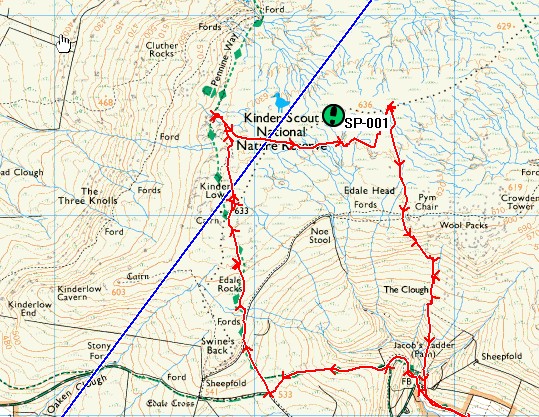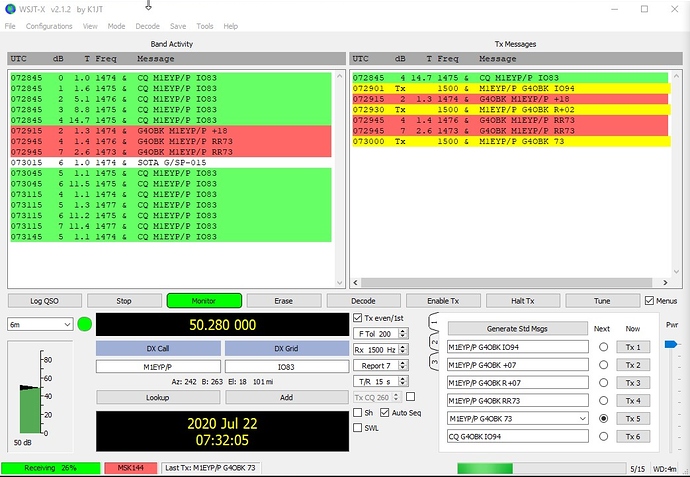They say, 100W and 10dBd were needed to successfully make MS QSOs. However, 50W and 8 dBd have been proved sufficient for a SOTA station. This is an invitation to all SOTA activators who want to do something crazy.
My report of a SOTA MS activation on 144MHz showed that there might be some SOTA OPs interested in an s2s event. One was Tom, M1EYP who asked me to organise the event on the reflector.
Except the current corona situation, the Perseids with their broad and intense maximum in mid August seem perfect. Regarding corona, it is still unclear if we all will be able to sensibly seperate ourselves for some hours on a summit of our choice then. I’m preparing for ‘yes’.
If you set up an MS station just in case and you can’t use it because there’s still a lockdown in your area , what have you lost? Nothing, you even improved your station and gained knowledge.
Event date
The 2020 Perseids will peak on the 12 August between 0800 and 2100z, according to Make More Miles 1300 - 1600z. This will be the day. According to the old MS rule of thumb that the signals in EU will be much stronger in the morning than around noon and in the afternoon, and my from experience gained feeling that a small station will rather be successful shortly before the maximum than shortly after, I alerted for 0400z. This time is rougly and may be subject to change.
Mode
I suggest MSK144 as this mode has gained much popularity and so there will be a good chance for SOTA stations to also contact non-summit stations, maybe dedicated SOTA chasers. Or is anybody fancying an old-fashioned HSCW or SSB QSO?
Basics
Experienced MS MGM OPs skip the next passages and links. Newcomers may want to watch Lyn’s, GW8JLY talk on MS.
A good introduction to operating procedures is Part 4 / chapter 1 of the IARU Region1 VHF Handbook, weak signal procedures and especially MS procedures.
Software
The most popular software is WSJT-X 2.0 or higher. If you have a running WSJT-X 144MHz SOTA setup, you’re ready to go.
I however use MSHV 2.38. It is said that this software decodes a bit more reliably than WSJT-X and can handle higher frequency offsets which is quite good for SOTA operations.
Procedures
Periods are 30s. For random contacts, central EU is 2nd period, all others 1st. For skeds, both stations agree on individual periods.
MSK144 does not use the MS report system, e.g. 37, but the SNR, e.g. 01. And it seems, there is no QSY on MSK144. All traffic takes place on 144.360. Why not, stations from the same area usually transmit during the same period and so do not interfere each other.
In the special case of a SOTA s2s event, QSY for scheduled contacts may be considered when stations that can hear each other participate in the event. I suggest to schedule contacts in this thread.
Testing
The Lyrids are still active for another two or three days, followed by the eta Aquariides up to 28 May (maximum 4/5 May). Good opportunities to test the rx setup, even at non-VHF’ish locations and with a small setup. The good thing about MSK144 signals is, you will most likely hear what you receive. If you hear the characteristic MSK sound (maybe just a ping or burst, may be a closeby staion) and see decoded message shortly after, the setup is probably ok. Best times will be early morning or late evening (EU).
Best way to test rx and tx capabilities will be a local digi station. Local contacts can be made in MSK144, no shooting stars needed.
ERP
50W and 8 dBd (1.5m boom) will be enough, quite feasible under SOTA rules. Anybody wants to try less power and become the MS QRP king? ![]()
Contest
From 11 August 1500z to 13 August 1459z, the annual MMM on VHF Dubus MS Sprint Contest will take place. All MS QSOs within the time period count, even from rovering stations. There is a QRP category < 1500W ERP which both is perfect for portable activity.
Who’s mad enough to join the event?
Ahoi
Pom





